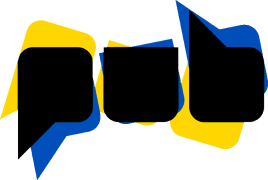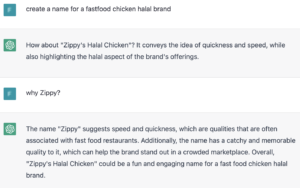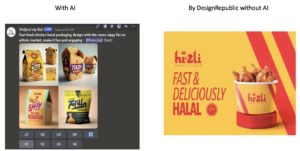Design Agencies & AI:
what’s cooking?
Here, we’ll be diving into the intersection of design agencies and artificial intelligence (AI). AI is rapidly changing the landscape of design, and we’ll explore how design agencies are using it to push the boundaries of what’s possible in branding, storytelling and packaging design. From the Gartner Hype Cycle to generative AI and the upcoming programs, we’ll cover it all. Plus, we’ll take a closer look at what DesignRepublic is doing in this space. So join me on this journey as we explore the exciting possibilities of AI in design agencies!
The Gartner Hype Cycle and Generative AI
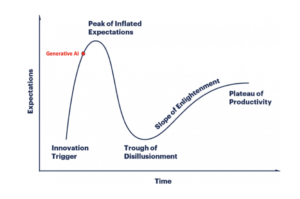
A way to look at new technologies such as AI is by using the Gartner Hype Cycle: think of the Hype Cycle as a rollercoaster ride for new technologies. At the beginning of the ride, there’s a lot of excitement and anticipation (“weeeeee!”). Then, as the technology starts to hit some bumps and challenges, the excitement fades and people start to get disillusioned (“oh noooo…”). But eventually, with time and patience, the technology levels out and becomes a reliable part of our lives (“yay, we made it!”).
The specific type of AI that can be of use to design agencies is Generative AI: a type of artificial intelligence that uses algorithms to generate new, original content, such as images, music, or text. Most of us have heard of Chat GPT to create content, and Midjourney that generates images from text, but many more programs exist. Let’s first have a look where Generative AI is on the Hype Cycle and what that means. Afterwards we will dive deeper into some programs and see if they mean the end of the agencies and designers!
Currently, Generative AI is almost on the “Peak of Inflated Expectations” phase of the Gartner Hype Cycle. This means that there’s a lot of excitement and buzz around the technology, with high expectations for its potential impact. However, as with any new technology, there are also concerns and challenges to be addressed. For example, there are questions around the ownership and attribution of generative AI-generated content, as well as concerns around the potential for bias in the algorithms. As the technology matures and these issues are addressed, it’s likely that generative AI will move towards the “Slope of Enlightenment” and eventually the “Plateau of Productivity”, where its full potential can be realized. But for now, it’s an exciting and promising area to watch and explore!
Upcoming Programs with examples
Out of the many programs that are on the market I selected a few that promise spectacular results:
- DALL E2 & Midjourney V5: these are 2 programs generating images from text input. These text inputs are called ‘prompts’ and it will require designers to craft the correct prompts.
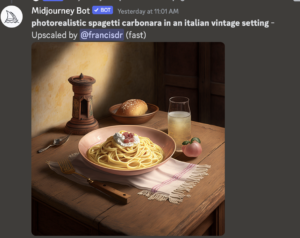
This image is created by me using the prompt: ‘photorealistic spaghetti carbonara in an Italian vintage setting’. Does this picture correspond to the prompt: yes. Is it a perfect picture in the style we want? Probably not but we can tweak the prompt (with the next programs). - Lexica / PromptHero: programs that shows you which prompt is attached to which image, so you can learn how to write good prompts.
- Astria: a program that generates images from other images, handy for product placement:
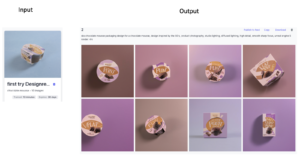
Again, is it good? It’s just ok, but for a perfect result we still have quite a bit of work. - asper & Chat GPT: both tools that write content for websites, for posts, for newsletters: personally I’m pretty impressed by the content writers. They come up with ideas that can inspire, they come up with logical structures for posts, they don’t make a lot of mistakes, but they lack a bit of originality. DesignRepublic created recently the branding for a chick’n halal fast food brand. We came up (without AI), with the name Hizli, meaning ‘quick, fast’ in Turkish and it sounds good in other languages as well.
Let’s see with what name Chat GPT comes up:
And here we go again: Zippy, not bad, it’s funny and yes it suggests speed and quickness but personally I think Hizli is much better: Hizli also suggests speed and quickness, but moreover there is a direct link with the ethnic market.
And now that we are used to play with the tools: lets ask Midjourney to create a chicken halal packaging design with the name Zippy:
Same conclusion as with the other examples: the AI results are nice but definitely not top. For some brand owners they will do: the ones at the very start of their adventure, the ones with really limited budgets, the ones looking for some inspiration.
Conclusion
There is a real avalanche of Generative AI programs in the creative space, and yes the results are stunning. In a few seconds of time completely new content, text and images, is created. The better the input (= prompts), the better the output. And even for learning to write good prompts there are programs.
Of course this output is created based on what is already in the machine and how the algorithm behaves. And this sets at the same time its limitations: very new creative concepts, a personal touch and even some humor are hard to expect of these AI programs. But don’t worry, even that will come, as the programs are improving with the speed of light.
So does this mean the end of creative professions? Of course not: it means an extra toolset, an extra push to rise above mediocracy, as mediocre results are generated by machines in seconds and no way you can compete with that. And the bar will rise with the development of those programs in time! So designers, better do some extra training and use AI at your advantage as I am still convinced that real creativity is a unique human trait… for now…..;-)
You are very welcome to contact me and share your vision on this topic, I am looking forward!
Best regards,
Francis – CEO DesignRepublic
P.S. various AI programs were used to create the images and the text of this newsletter, though the input and the final result needed a bit more than a personal touch.
